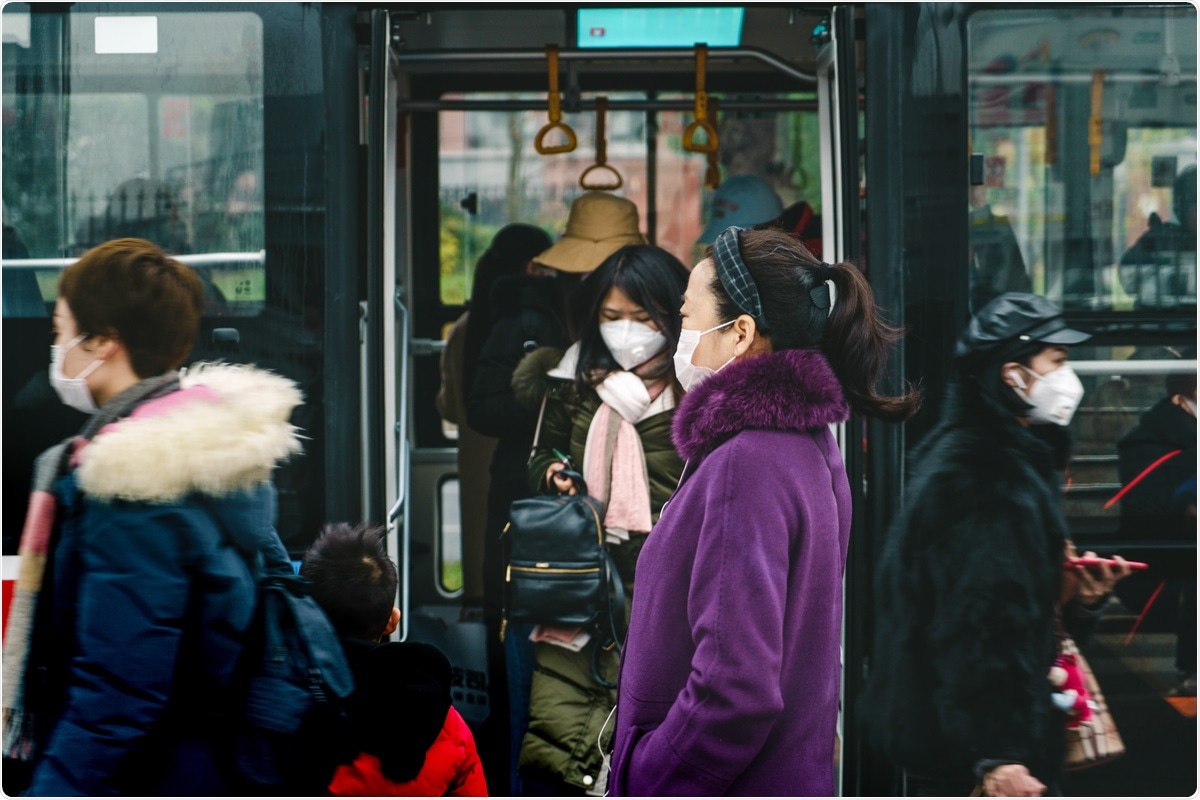When coronavirus disease 2019 (COVID-19) spread across the globe last year, most attempts at controlling the disease focused on reducing transmission. As severe acute respiratory syndrome coronavirus 2 (SARS-CoV-2), the causative agent of COVID-19, primarily spreads through droplet transmission, the most effective measures focused on keeping people at a safe distance from each other.
 Study: Comparison of 11 respiratory pathogens among hospitalized children before and during the COVID-19 epidemic in Shenzhen, China. Image Credit: IHOR SULYATYTSKYY/ Shutterstock
Study: Comparison of 11 respiratory pathogens among hospitalized children before and during the COVID-19 epidemic in Shenzhen, China. Image Credit: IHOR SULYATYTSKYY/ Shutterstock
Measures to help enforce this included lockdowns, stay-at-home orders, mass closures of public spaces, and mandatory face masks in most public areas. This has had the beneficial side effect of reducing influenza, which spreads through much the same methods. This has been observed in several studies
However, very few have examined the rates of transmission of other seasonal respiratory viruses have been affected. Researchers from Shenzhen's Children's Hospital have been investigating the occurrence of these diseases while these measures were in effect to understand better how to curb their transmission.
The study
The researchers examined patients admitted to the Shenzhen Children's Hospital with acute respiratory infections (ARIs) between September and December in 2019 and 2020. Any patients below 14 years old presenting with one or more of the following symptoms was eligible for admission into the study; cough, sore throat, body temperature above 37.5C, or dyspnea/tachypnoea.
Nasopharyngeal swabs were obtained within 24 hours of admission, and the nucleic acids were extracted and tested for 11 common respiratory pathogens, including coronaviruses, adenoviruses, and influenza. The common pathogens were: Influenza A (InfA), Influenza B (InfB), Human parainfluenza virus (HPIV), Human respiratory syncytial virus (RSV), adenoviruses (AdV), Human metapneumovirus (HMPV), Human rhinovirus (HRV), Human bocavirus (HBoV), Human coronavirus (HCoV), Chlamydia (Ch), and Mycoplasma pneumoniae (MP). These were tested for using PCR assays.
Over 5,500 children were included in the study, with around 1000 more in 2020 than in 2021. The participants were divided by age and year of admission and included an equal mix of sexes. In 2109, 80% of those tested were positive on at least one test, with 70% of these positive for only one pathogen. In 2020, 70% were positive for at least one pathogen, with 85% of these positive for only one pathogen. The most detected pathogens in 2019 were HRV, MP, and HPIV, while in 2020, MP was replaced with RSV. Five pathogens (InfA, HRV, MP, AdV, and Ch) were detected less in 2020 than 2019. In school children, all pathogens were lower in 2020.
Having evaluated the rates of each of the eleven pathogens, the researchers showed that detection of InfA, MP, HRV, and AdV decreased by a significant margin, reducing the number of drugs prescribed to combat these diseases. The COVID-19 restrictions also appeared to subvert the normal trends seen in several of these diseases.
As Shenzen is in southern China, its climate typically follows the subtropical monsoon pattern, leading to high rates of influenza in the autumn and winter. Despite this, the rates of this disease remained low across the whole year.
COVID-19 restrictions likely played a large role in this, but it is also possible that COVID-19 infection may block infection of another virus. This has been seen in several other illnesses, normally due to interference between the two species or resource competition. However, the researchers point out that fear of hospitals and pharmacies as COVID-19 hotspots may have driven away many individuals who would otherwise have been tested, resulting in artificially decreased results.
Some viruses, such as RSV, HPIV, and HMPV, showed increased detection rates during the pandemic. In the case of RSV, this may be due to the decreased instances of influenza, which is known to interfere with RSV infection.
Conclusion
The researchers conclude that the methods used to limit the transmission of COVID-19 are also strongly effective against several other viruses, most notably influenza, and highlight the importance of these results in helping to inform public health policymakers. These could help plan strategies to prevent and limit influenza outbreaks and inform healthcare workers and authorities of the most dangerous threats in each season.
While the study was limited in geographical location and did not examine the results across the entire year, the researchers have provided a useful and fascinating insight into the pandemic's effects, and the attempts to restrict have had on the epidemiological landscape.